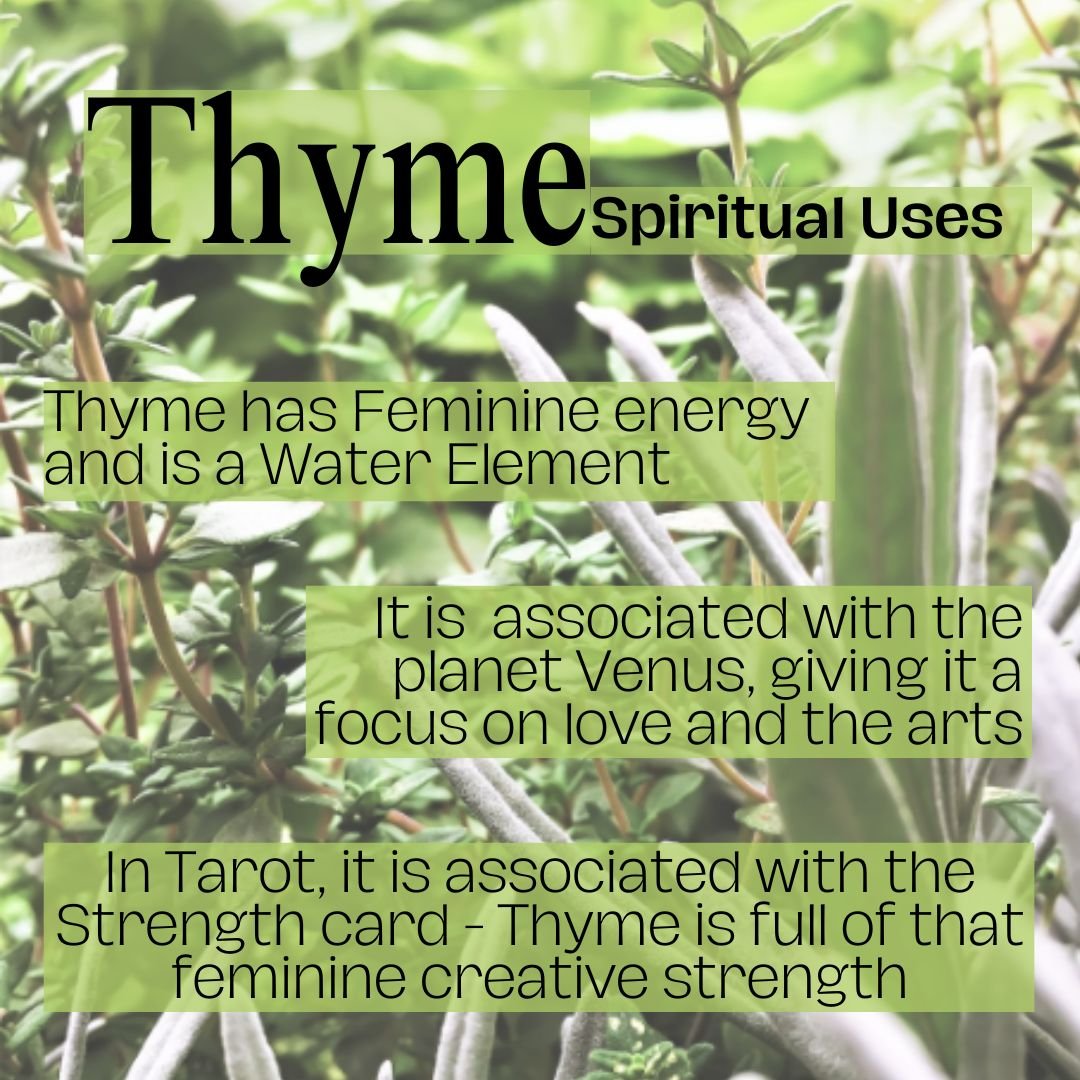
Thyme
Thyme is one of those scents that just draws me home. It is spicy and pungent but subtle enough that I love using it in baking and sweet dishes as well as savory. Its activating energy helps with all kinds of problems from congestion to stuck energy. It’s a perfect herb to kick off the summer.
-

Thyme - June's Herb of the Month
Thyme, June’s Herb of the month, is in the Lamiaceae (mint) family. The Lamiaceae Family includes: Mint, Sage, Basil, Rosemary, Lavender, Catnip, Lemonbalm, Oregano, and many more!
-

Name and Nativity
Thyme is native to the Mediterranean region (including northern Africa and western Asia). It spread throughout the world and now grows on most continents
Thyme’s name comes from Thumos and Thymos, the Greek words for courage and perfume.
-

Identification
Thyme identification: Thyme can be identified by it’s short, squared, woody stems. Lamiaceae family members can be identified by their square stem . Thyme has small green leaves that grow in pairs, and feathery, purple flowers when it blooms. The scent is intense and peppery.
-

Thyme History
The oldest known use of thyme is as an antiseptic in ancient Sumeria around 5,000 years ago . Egyptians used it as a pain reliever, an antidote, and in embalming . Thyme has been a primary ingredient in the spice blend Za’atar which has versions from Morocco all throughout northern Africa and the Middle East.
-

Thyme in Palestine
Thyme is a very important herb in Palestinian culture. Za’atar (thyme) refers to both the wild herb as well as the spice blend. The collection of wild za'atar was band by Isaraeli law during the First Infada (1987-93) because of its status as a Palestinian national symbol. (@karlomarx on tiktok, and EnviroSociety)
-

Thyme in European History
Thyme spread throughout Europe during the rule and invasions of the Roman Empire. Thyme was an emblem of bravery in Middle Ages, sometimes given to knights going into battle. Victorians associated thyme with fairies and believed a sighting of wild thyme meant fairies had been dancing nearby.
-

Thyme Medicinal Uses
Conveniently one of the first herbs to pop up in spring, thyme is often used to help clear cold and flu symptoms, cough, congestion, and most respiratory and bronchial issues. Thyme is anti-septic, anti-microbial, and anti-fungal and is especially great at clearing out the respiratory system.
-

Medicinal Uses
Thyme also has anti-inflammatory properties that reduce the inflammation in tissue. In the 1300s during the Black Death, thyme was believed to prevent the plague and people often wore bunches of it to keep the plague away.
-

Throat Soothing Tea
1 part Lavender
1 part Thyme
1 part Slippery Elm (can substitute Cherry Bark)
¼ part Stevia
Brew for 6-10 minutes for full medicinal benefit. (Even better if you cover it while brewing)
-

Thyme Spiritual Uses
Thyme has Feminine energy and is a Water element
It is associated with the planet Venus giving it a focus on love and the arts
In tarot it is often associated with the Strength card – Thyme is full of that feminine creative strength
-

Spiritual Uses
Thyme is believed to grant courage (which is one of the reasons it was carried by soldiers). It was believed to help in health, healing and purification as seen during the Middle Ages to ward off the Black Plague. Thyme also aids psychic connection and protection. It is believed putting thyme under your pillow keeps away nightmares.
-

Thyme and Fairies
Thyme is heavily associated with fairies. It was believed fairies danced and slept in thyme patches so people would plant it hoping to attract them. Some believed carrying a sprig of Thyme allowed you to see the fairies
(Art: Wild Thyme Fairy by Cicely Mary Barker)

